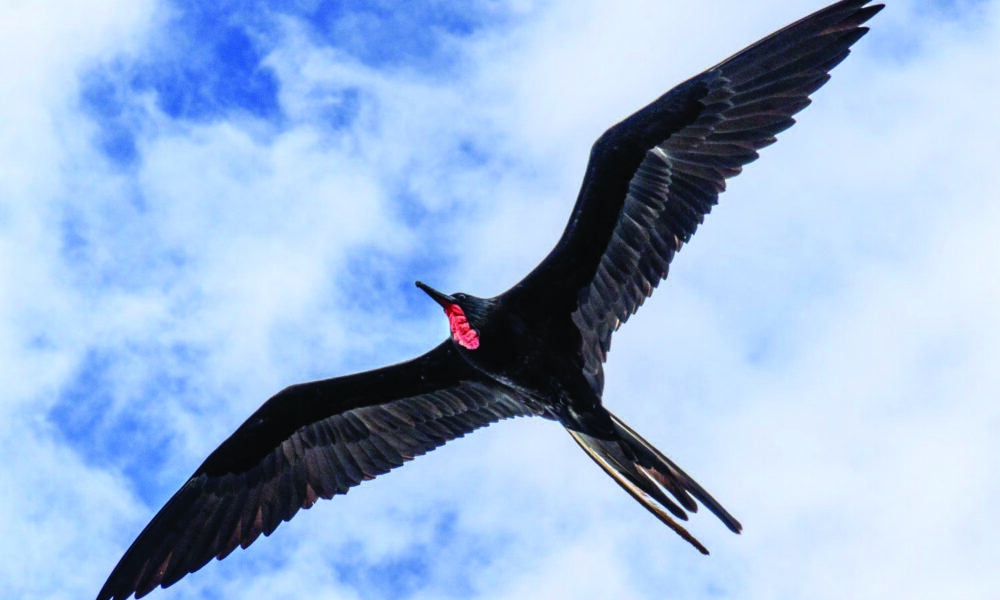Flying is fundamental to the survival of birds. It’s how they migrate, find food, mate, and escape predators. Along with its benefits, flight comes with unique risks as well: One wrong maneuver and a bird could plummet out of control. So, how exactly do birds become the masters of flight as adults? This is the question third-year biology honours student Maggie-Rose Johnston, a member of the Sarah Woolley lab, is trying to answer. Working with zebra finches, Johnston is seeking to understand how a bird’s brain interprets the physical stimuli sensed by its wings.
“The basic hypothesis is that the activity going on in the feathers should be translated in the brain,” Johnston said in an interview with The McGill Tribune. “What I’m doing is just the real basics of understanding a whole lot of avian flight and how they react to pressure differences and airflow.”
Relying on sensory feedback from their feathers to navigate the aerial environment, birds use tiny changes in wind patterns to fine-tune their movements through the air. The sensory information is passed along from the bird’s wings to its brain using its central nervous system, guiding the bird during flight so that it can seamlessly react to ever-changing air currents.
“Whiskers are a good analogy for filoplumes,” said Johnston. “They are these long feathers that have a little tuft at the end of them and are interspersed in avian wings. And what seems to be happening is that these are acting like whiskers, detecting the movement of the larger feathers.”
The main focus of Johnston’s research is to distinguish which areas of the brain are involved in interpreting the movement of feathers. To mimic the motion of flying, Johnston moves one of the zebra finch’s wings up and down, by hand. Once this flight simulation is completed, the bird’s brain activity is measured.
“In future steps, [we] may use tweezers to move a specific feather, but at this point we’re just trying to find the ballpark of what we’re looking at here,” Johnston said.
During flight, certain neurons in the hyperpallium apicalis, an area of the brain involved in interpreting sensory information from the wings, are activated. To identify which neurons are firing, Johnston measures the activity of an early activation gene called RPS6. This gene marker acts as an indicator of neural activity and is used to determine which regions of the hyperpallium apicalis are involved in the interpretation of sensory information.
During the measurement process, the birds are sedated and left to rest in the dark away from any external stimuli before brain activity is measured to try and reduce any data obstruction. Johnston admitted, however, that background noise can interfere with the experiment.
“The problem is that there is a little bit of activity in the [hyperpallium apicalis] but it’s not very striking compared to the background noise,” Johnston said.
This link between sensory information and flight mechanics is still somewhat unclear, but Johnston is using this as a learning opportunity to improve her experimental protocol. She views the ambiguity of her results as a way to learn and is keen to go back to the drawing board. Nevertheless, her results are far from insignificant as they are still furthering the understanding of neural correlates of bird flight.
When it comes to future applications of her research, Johnston believes that the field of avionics has much to learn from the flight of birds.
“Understanding how birds fly can open up a whole new avenue for engineering in general and engineering of flight,” Johnston said. “The energy-saving potential of getting machines to behave like bird wings is incredible.”
The mapping of neuro-mechanics of bird flight could revolutionize aviation, most notably within the sector of drone engineering. How birds compute air flow changes and adapt to their surroundings is a source of interest for self-driving drones research. Johnston hopes to conduct further research on birds and other vertebrates to unlock the design secrets embedded in their anatomy.










